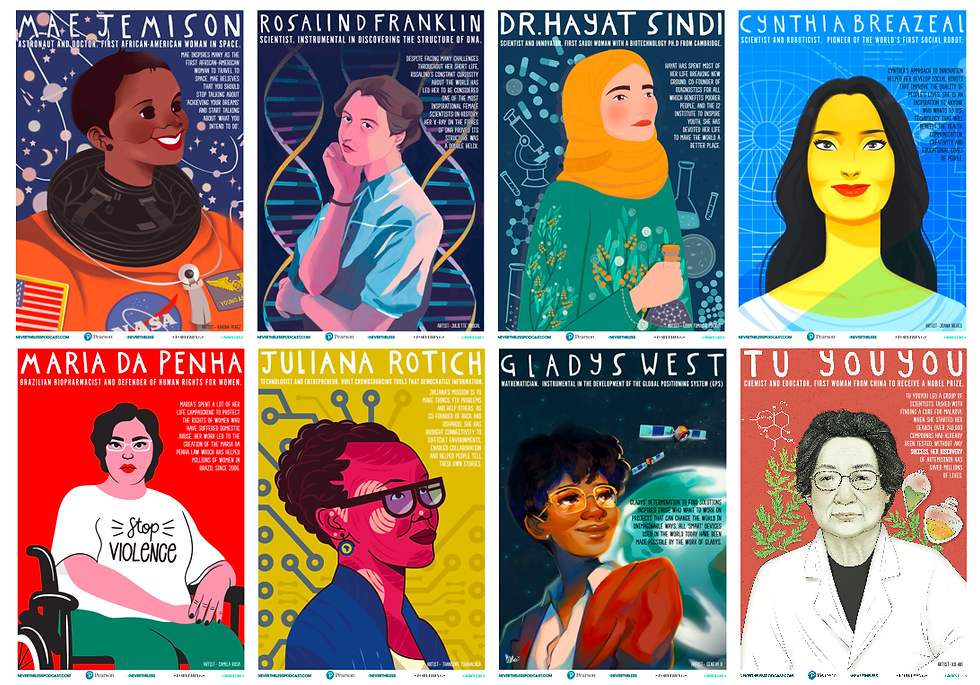STEM's Devastating Gender Gap
- Ananya
- Jan 27, 2022
- 3 min read

For decades, studies have repeatedly shown that the fields of mathematics, technology, engineering and science are predominantly male and lack adequate representation of minorities. This gender image has shattered the way many young scholars with great potential anticipate their future, and more and more students feel discouraged to immerse themselves in a field with such exclusivity.
Over the years, although we have made social progress in terms of overcoming stereotypes and gender roles, making opportunities accessible to everyone, among other missions for equality, in STEM and many other loci of interest, diversity continues to be intertwined with inequality. Innovation within STEM has made our lives what they are today, and these innovations come from the intelligence, creativity and hard work of many individuals. Thus, what STEM is today is indisputably correspondent with those STEM scientists or STEMists that form the foundation of how all things work in the contemporary world. There is more genius behind STEM than just the white man. According to the Oxford dictionary, diversity is, and I quote, the practice or quality of including or involving people from a range of different social and ethnic backgrounds and of different genders, sexual orientations, etc.
Simply put, diversity is about difference. Over the course of history, these differences have set people apart and set them behind, as their opportunities are limited by prejudice and discrimination. Diversity demands inclusion and equality across the social spectrum, both of which are basic human rights. The valid argument of “nobody should be prevented from achieving their full potential and taking advantage of opportunities based on the colour of their skin, their gender, their sexual orientation, caste, etc.” has been around for many revolutions, but it doesn't provide the “logical justification” that many discriminative people seek. If we step into a time machine and head back to the Renaissance, a time of scientific growth, or even the different phases of industrial revolutions, we hear of great names like Isaac Newton, Albert Einstein, Gregor John Mendel, Dmitri Mendeleev, and the list goes on; in the spirit of what is called a fixed mindset, these individuals were traditionally presented to have sort of an inherent genius. But today, we learn with the growth mindset, that knowledge and brilliance is cultivated with effort and perseverance. To learn more about this concept of the two mindsets, I definitely recommend “mindset” by Dr Carol S. Dweck, a bestseller that “changes the way you think to fulfil your potential''. In opposition to the centuries-old theory of Social Darwinism, it is clear that genetics is not what makes us brilliant. So, who are we to question the potential of different social groups and minorities just because they appear different? That is what diversity is about, diversity facilitates broader perspectives, prompts growth and development, and drives excellence.
However, despite its benefits, the STEM disciplines still lack the inclusivity many changemakers seek, especially in the United States. Underrepresentation in STEM is preventing innovation, creativity, and discovery as more human potential goes to waste, with many communities feeling incapable or as misfits due to cultivated social beliefs and archetypes. Choosing a career path is hard enough, as students seek a discipline or field in which they feel like they belong or are accepted, but being a minority, a woman, or a person with a disability, there are even more social obstacles and uncertainties to overcome.
In 2018, women made up less than a quarter of those working in STEM occupations in the US, with the representation of women of color being even lower, with Hispanic, Asian, and African American women each receiving less than 5% of STEM bachelor’s degrees. Another one of these obstacles for women is the ideology that the media has cultivated with the traditional gender roles or just the paradigms of minority groups, given the scarcity of female and underrepresented minority professionals to pose as mentors, inspirations, and role models to potential STEM students. Media portrayals are constantly evolving and it really is great to see the progress that has been made, nevertheless, the changing ideologies are yet to transform and translate into tangible statistics, so in today’s world, it is increasingly important to combat and mitigate this disproportionately low representation of certain communities, something that I hope to do in conversation with STEM professionals who will share their journeys and hopefully inspire you all along the way with my podcast STEMed: exploration beyond the surface, an Ingenious brand.
For inquiries, feedback, etc. you can visit the community tab, leave a message or simply mail ingenious.theblog@gmail.com
Instagram ~>https://www.instagram.com/ingenious.thepage/
SPOTIFY - STEMed: Exploration Beyond the Surface -



Comments